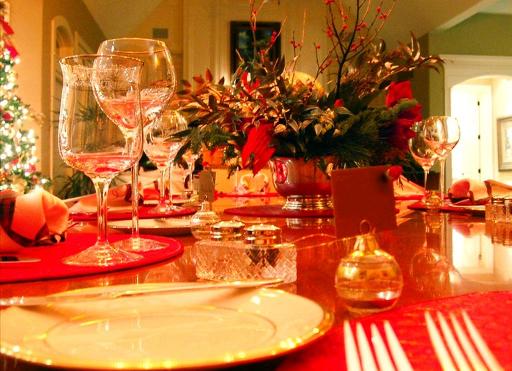
A
large part of the fiestas in the Canaries are of religious origin, even
if with time, they have lost this character. Many others record a
native tradition; the inhabitants of the Canary Islands are deeply
devoted to tradition, so the origin of some of these fiestas goes back
to Guanche times. Those traditions generally celebrated the arrival of a
season or a particular time of the year. Some celebrations-those of a
pagan character, are exclusive to the archipelago.
The majority
of these fiestas are now associated with the cult of saints, in
particular patron saints, or - in agricultural regions – the marking of
the end of harvest. Each village has its Patron Saint and hence its own
fiesta, (so there are many on the island during the year!) They are
usually celebrated with processions of a statue of the saint through the
streets in a very somber parade. Some fiestas last from one to three
weeks: besides much entertainment and fun for young and old, these
fiestas often offer a full programme of traditional activities, folklore
performances, traditional dancing and sporting events, such as
wrestling (lucha canaria) stick fighting competitions (juego de palo).
nb. Some dates may vary slightly from year to year
January 6
Feast of the Three Kings.
In
Spain, children receive their Christmas gifts not from Santa Claus but
from the Three Magi on the Feast of the Epiphany (January 6). On the
previous evening there are parades in most towns depicting the arrival
of the three gift bearers who usually pass through the streets on camels
throwing sweets for the children.
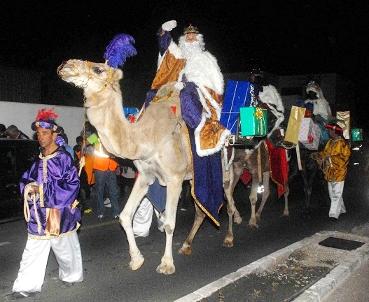
February 2
La Candelaria. La Oliva and Tuineje
A
fiesta dating from the pre-conquest it has its origins with the Guanche
people who would gather in the highest points of the island and spill
milk in a ritual to supplicate for rain. After the conquest, this was
transformed into the fiesta of Our Lady of the Candle who lights the way
and guides the people. Known as Candlemas in Europe It marks Mary's 40
days of purification after the birth of Jesus and is celebrated on the
2nd February.
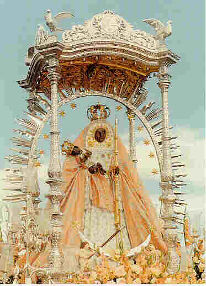
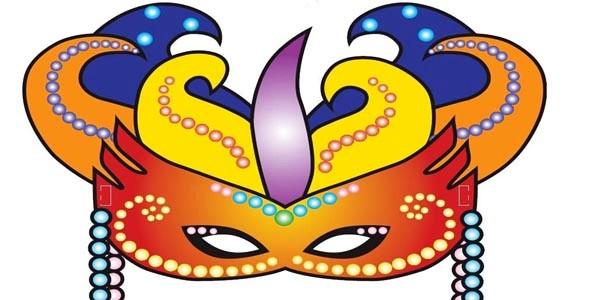
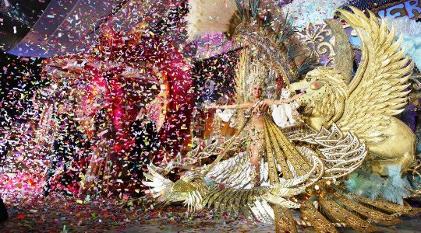
Easter.
Spain
is famous for its Holy Week processions, which take place between Palm
Sunday and Good Friday, and on Easter Sunday. The more elaborate ones
involve enormous, heavily ornamented floats with the images of Christ or
the Virgin Mary, often carried on the shoulders of men, in processions
which can last many hours, escorted by hundreds of penitents wearing the
familiar hooded costumes. On the island the fiesta is simpler but still
strictly adhered to by the local people and you will find the churches
decked with flowers.
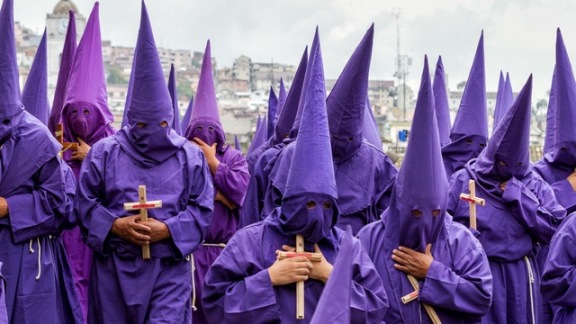
May
Corpus Christi.
This
is one of the most popular and solemn fiestas in the catholic world and
in the islands and one marked by the elaboration of carpets of flowers
and salt in the streets of the some of the villages and capitals. The
origins of the carpets is not known but is believed to stem from the
custom of covering the streets where the procession of the body (corpus)
of christ passed with aromatic flowers. The carpets are incredibly
elaborate and intricate, especially in the Tenerife town of La Oratva,
in Fuerteventura coloured salt is the main ingredient, perhaps due to
the past scarcity of flowers.) The fiesta always falls between mid May
and mid June, it is the celebration of the Eucharist - the Last Supper.
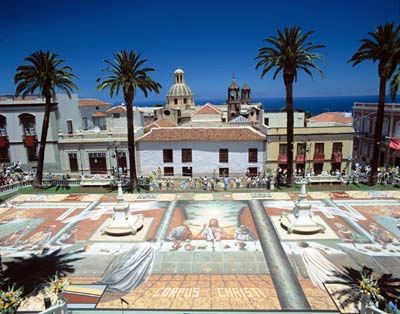
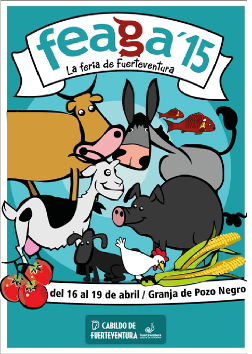
May
The Antigua Craft Fair.
Also
held in May, usually at the beginning of the month, this fair is a
showcase for the craftsmen and women to display and sell their wares.
There is a great selection of stands ranging from pottery to jewellery to
hand crafted wind powered water pumps; the variety and standard of the
craftwork increases each year.
A good place to buy souveniers and presents.
It is a pleasant day out and there are many events such as concerts by local musicians etc.
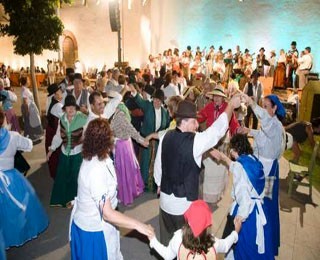
June 23
La Noche de San Juan.
Saint John used to be a feast organized to celebrate the summer solstice.
It is held on the night of June 23rd, which is the longest night of the
year.
In past times, torches were lit at sunset to represent that light
didn't completely go, but that it was always present.
Currently, this
fiesta isn’t really the same, adopted and adapted by the church, as so many ancient traditions were, it is now known as Saint John's Eve and,
instead of lighting torches, the people set off fireworks and rockets.
In this way they preserve tradition, but adapt it to the new times.
Another ancient tradition, still preserved nowadays, is lighting
bonfires, with these bonfires; people had light in the evenings, to keep
away darkness till the sun shone again. The fires weren’t made with
ordinary wood, but with the pieces of furniture people didn't want any
more. Thus, the town folk kept all their old things that couldn’t be
burnt at home, and some days before Saint John they brought them all to
the street to make huge bonfires.
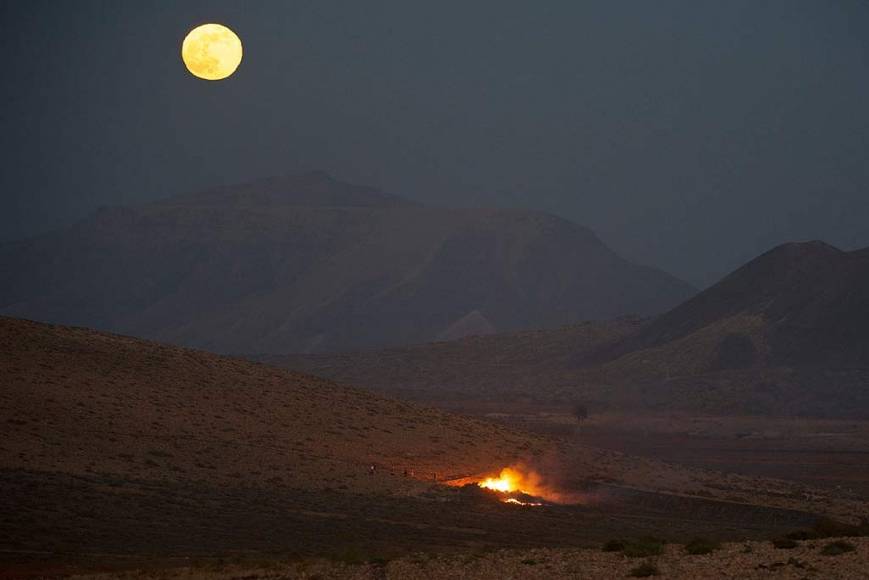
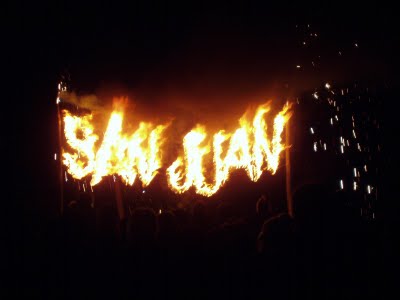
July 16
Fiestas del Carmen
A fiesta held in seaside towns in honour of Our Lady of Carmen.
The festival is especially important in the fishing villages of the island (and indeed all Spain) Puerto del Rosario amongst others has the Virgin del Carmen as their town patron.
The title of Our Lady of Carmel (or Carmen) can be traced back to the hermits who used to live in the renowned mountain at the time of the Old Testament.
The holy prophet Elias ascended Mount Carmel to pray to God for the salvation of Israel which was suffering a terrible drought at that time. He persevered in prayer and sent his servant several times to the mountaintop to see any sign of foreboding rain. Elias, never wavering in his confidence, received the good news on the seventh try, “Behold a little cloud arose out of the sea like a man’s foot” (1 Kings 18:44). Soon thereafter, torrential rains fell upon the parched land and the people of Israel were saved.
The Virgin del Carmen is held such esteem by the inhabitants of fishing because hermits, following in Elijah's footsteps asked for the protection of the Virgin Mary of Mount Carmelo - the Virgin of Carmen. Stella Maris, as she was also known, she was soon adopted by mariners and fishermen everywhere as their patron.
Although long overtaken by tourism, many towns still retain fishing communities and a strong attachment to "la Reina de los Mares" (the Queen of the Seas). It was once believed that the Virgin cleared up the waters with her presence and that only after July 16 would the sea be fit for swimming in.
The fiesta lasts around a week with many events and dances and during the festivities a statue of the virgin is carried in procession from the church to the harbour and placed in a boat, many fisherman and local residents accompany her in boats.
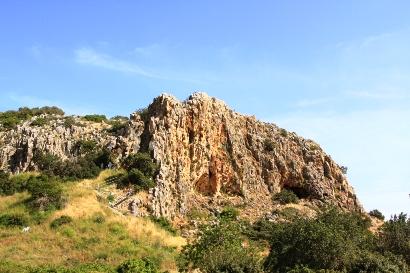
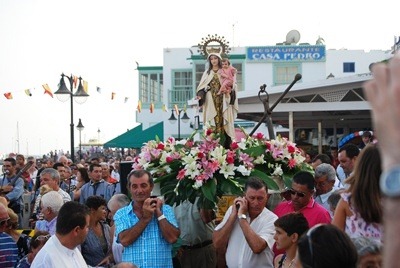
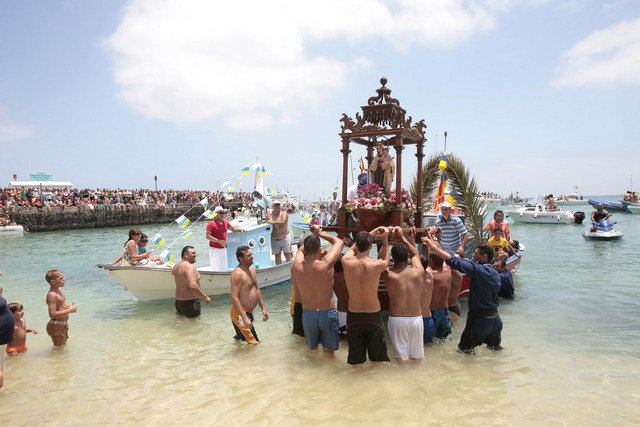
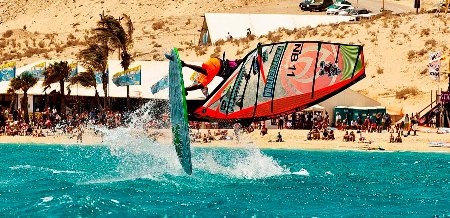
September 11 -13
International Deep Sea Fishing Contest
Every
year in September the “Tag and Release” Deep Sea Fishing Contest is
held from the southern port of Gran Tarajal; the event attracts
enthusiasts from around the world who hope to catch tuna, shark, blue
marlin and other species that inhabit the surrounding Atlantic waters.
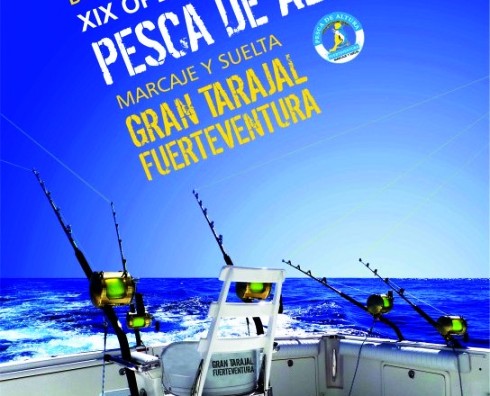
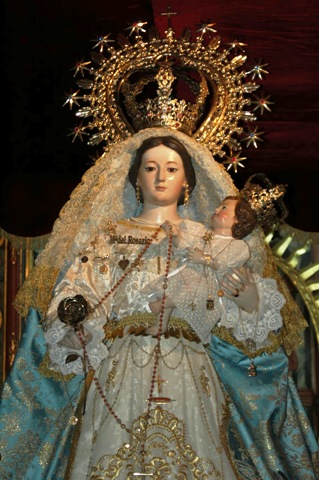
October
The Battle of Tamasite.
Every
year during the second week of October the local population of the
village of Tuineje dress up as English pirates and farmers and re-enact
the great victory that they won in 1740 when brave farmers and just 43
soldiers successfully made a stand against the repeated pirate attacks
on the island. The whole village attends the celebration and a play
about the battle is performed in the open air. There is also a parade
through the streets with many floats and a boat is burned in
commemoration of the boat of Jose Sanchez Dumpierrez, who as Governor of
the village directed the defense.
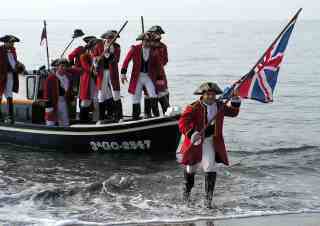
November 1
El Dia de los Difuntos (The Day of the Dead)
Known
in Europe as All Saints Day, the first of November is the day on which
the dead are believed to revisit the living and are duly venerated; the
local people visit the cemeteries in very large numbers, decorating them
and bringing flowers to the family graves.
In recent years celebrating Halloween on 31st October has been gaining a lot of popularity, especially amoungst the younger generation.
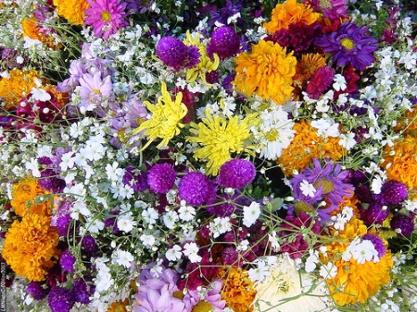
November 8
The Kite Festival Corralejo
Each
November the glorious beaches of Corralejo are host to the
Fuerteventura Kite Festival that is held on the Playa del Burro (or
Glass Beach). Due to the beautiful white sandy beach and Atlantic Trade
Winds this is a wonderful venue for the world class kiters to
demonstrate their skills. The blue skies and dunes provide an ideal
backdrop for the vividly coloured kites- a wonderful sight to behold.
The weekend event begins on Friday with “free flying” which gives the
first viewing of the vast array of kites; on Saturday the kiters begin
to compete and the sky becomes a stage for their skills. Sunday is
family day where children get the chance to handle kites and there are
many suprises in store. The colourful weekend ends after stunt kites
battle it out for supremacy of the skies.
December 24th
Christmas Eve, mostly celebrated with a family dinner in the home.
You wont find many restaurantes open this evening.
The big party will be on New Years Eve!
